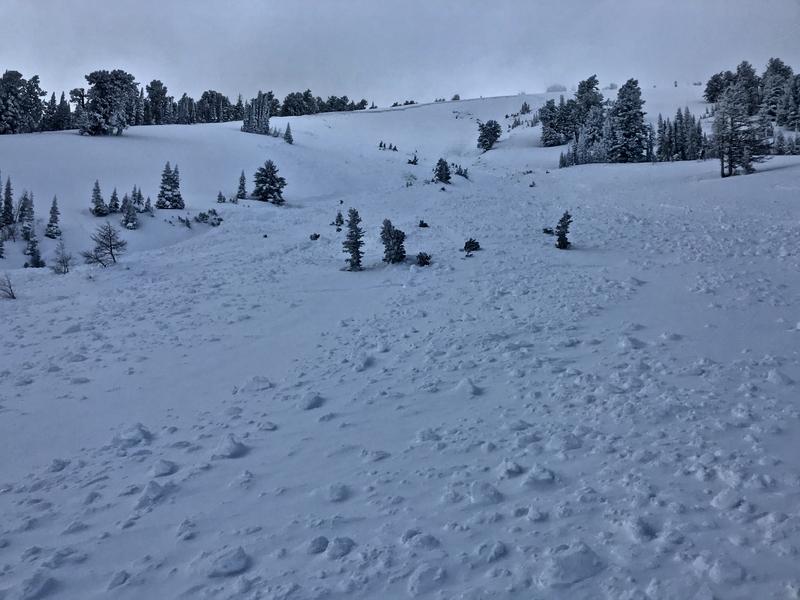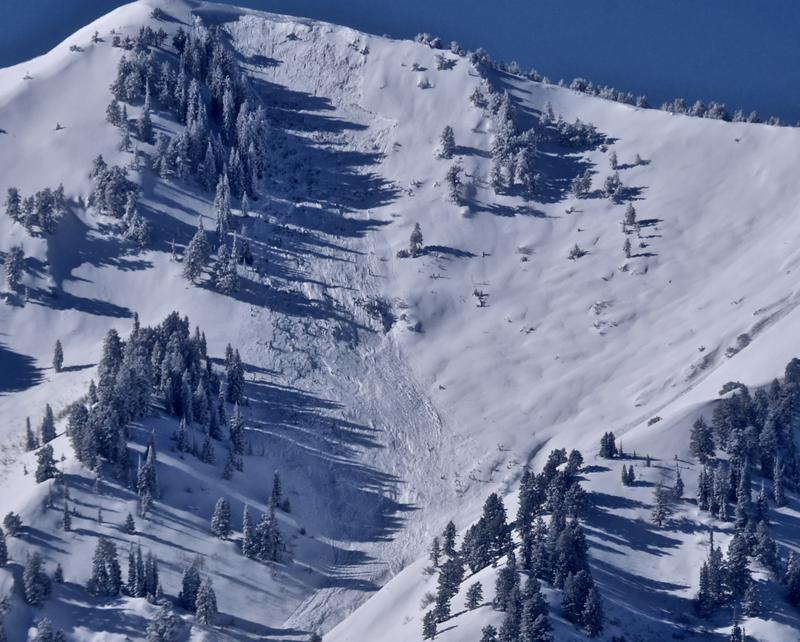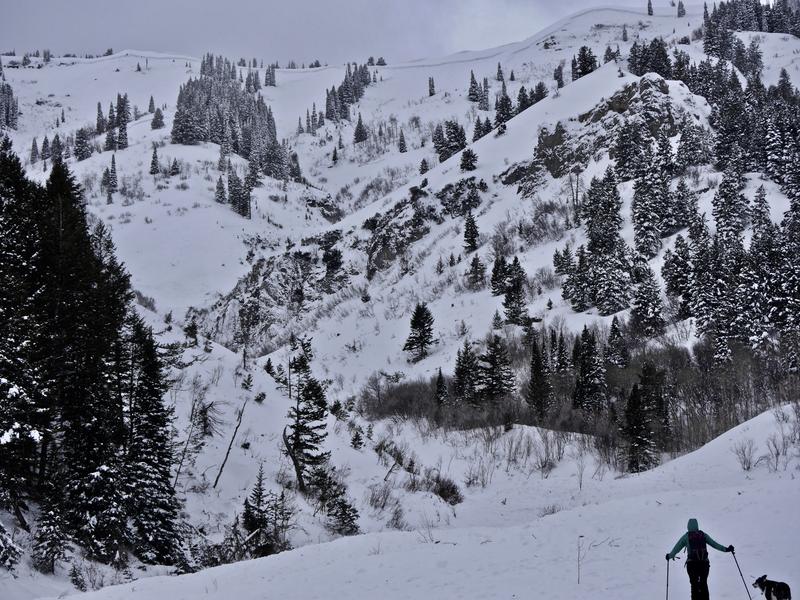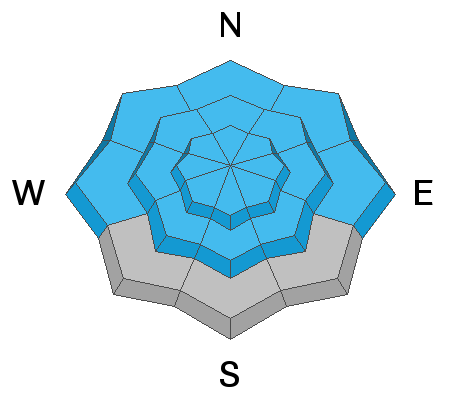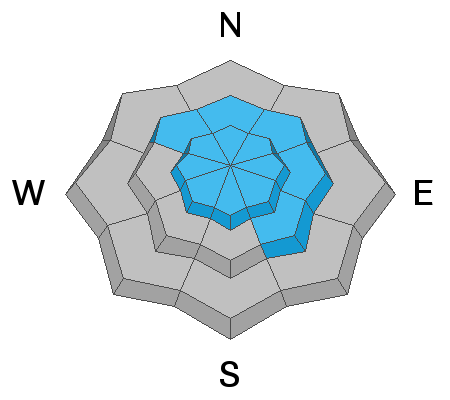We are very sad to report that on 2-20-2021, a 48-year-old Preston man was killed in an avalanche on the east side of Mount Sherman near Georgetown Idaho. Preliminary accident information is available from
Local News 8 and
Idaho State Journal. We visited the accident site yesterday and are working on the report. We will publish more details soon.
Light snowfall is visible on the Beaver Mountain Webcams this morning. There is a couple inches of new snow with 0.1" SWE in the last 24 hours. It's 27°F at the 8400' Tony Grove Snotel. There is 74 inches of total snow and 82% of normal SWE. Westerly winds are intensifying and drifting snow this morning at upper elevations. Winds from the west are blowing 25 to 30 mph and gusting to 51 mph at the UDOT Hwy 89 Logan Summit weather station. Very large natural avalanches were widespread across the Logan Zone early last week. In several areas, natural avalanches were incredibly extensive, with nearly all avalanche paths producing big slides.
We're expecting a windy day in the mountains. Snow showers are likely this morning, with 1 to 2 inches of accumulation possible. Temperatures at 8500' will drop to around 14°F this afternoon, and strong westerly winds will continue to increase this morning. Wind chill values will be as low as -4°F. Expect cold and unsettled weather to continue through the week, with only light accumulations...
On Saturday 2-20-2021 a party of riders remotely triggered a very large avalanche near Gibson Lakes in Franklin Basin, a few miles north of the Idaho state line. The large group of riders were down in the flats, and well out from under any steep terrain when they heard a very loud "sonic boom" audible collapse, and the whole hill came down... clouds obscured the crown, but the debris field was quite broad.
A couple fresh natural avalanches in the Wellsville Range were observed Saturday from a distance. These were most likely caused by cornice falls, and blowing snow continues to build large sensitive cornices and deep drifts or wind slabs on lee slopes in exposed terrain.
A fresh natural avalanche in the Wellsville Mountain Wilderness, 2-20-2021.
A significant natural cycle occurred across the Logan Zone early last week, with many huge avalanches observed. Very large natural avalanches failing on a buried sugary persistent weak layer and running well out into lower elevation runout zones were widespread and occurred on slopes facing every direction. Reports of extensive natural avalanches include most avalanche paths in the Wellsville Mountain and Mount Naomi Wildernesses, in Upper Spring Hollow, and Wood Camp Hollow. Big avalanches were also reported near Tony Grove Lake, Providence Canyon, Logan Dry Canyon, Cub River, Hillyard Canyon, and in the mountains west of Bear Lake.
Large natural avalanches were widespread across the Logan Zone early last week.




